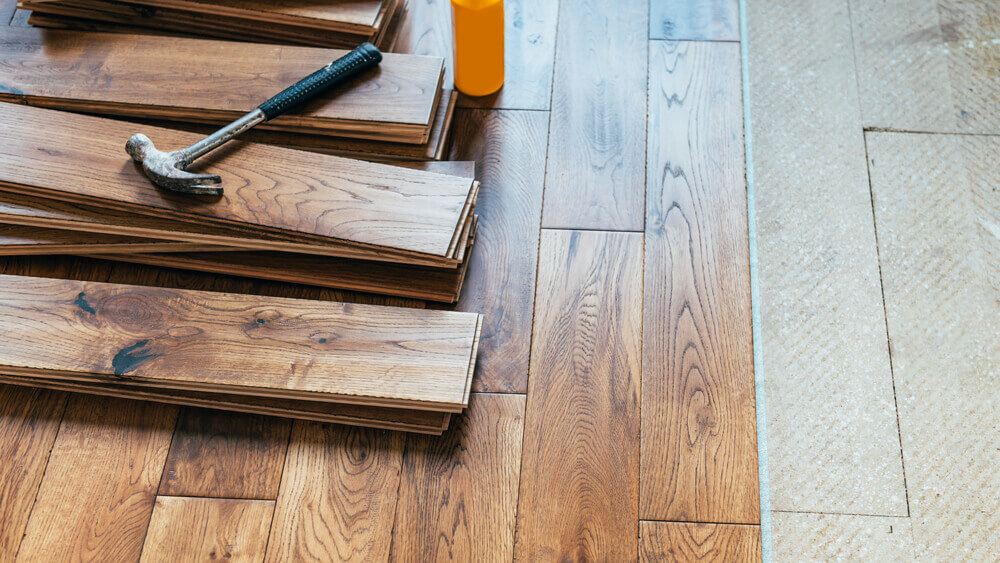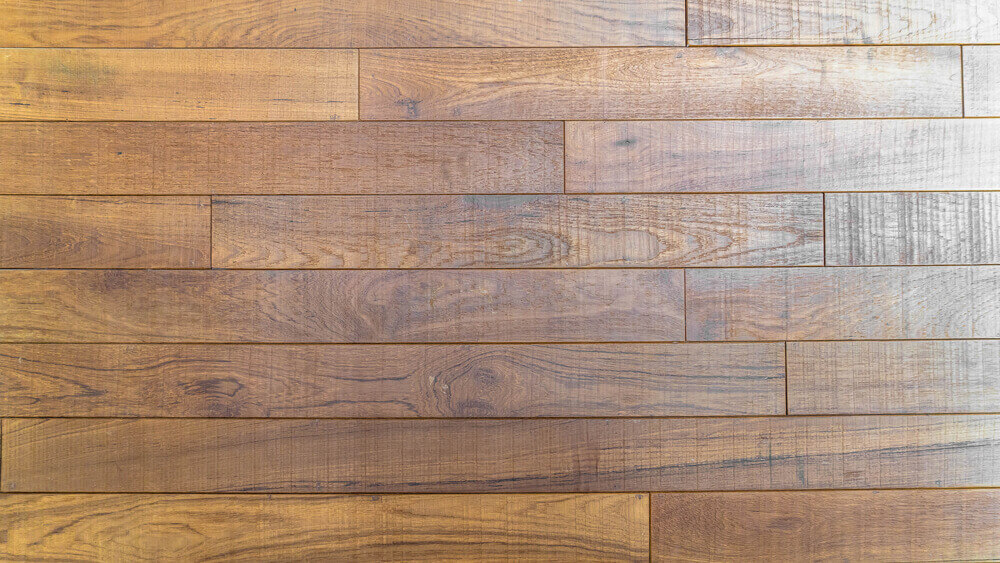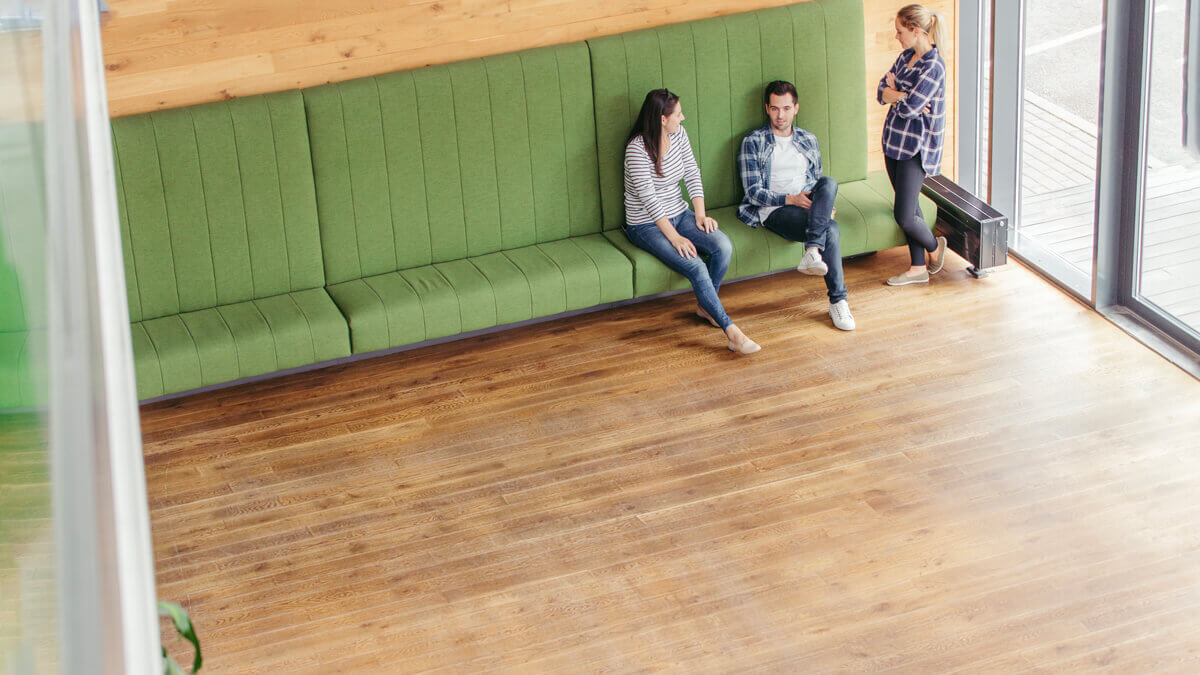Timber flooring gives any home a natural wood look along with personality and originality. However, to have this look, you need to consider different types of timber finishes to pick the right one based on the place and your preferences. Picking a timber finish can be hard as there are so many options, ranging from natural and matt to shiny and eye-catching. In this article, we will introduce the main timber finish categories to have a better view of each timber product.
Timber flooring finish types
Timber flooring finishes are divided into four main categories. Each category has its advantages and disadvantages which will be discussed in this article.
Oil-based timber finish
Oil-based timber finishes penetrate the wood and improve its natural wood look. This finish provides a warm and rich color and it is mostly made from linseed or tung oil.
Here are some advantages and disadvantages of oil-based timber finishes:
Advantages:
- It offers the natural beauty of wood.
- It is easy to install and maintain.
- It gives a shiny look to the floored area.
Disadvantages:
- After the installation, timber flooring with an oil-based finish needs more time to dye in comparison to other finishes.
- Oil-based timbers are less resistant to scratches and dents.
- It needs more maintenance to stay protected.

Water-based timber flooring finish
Water-based timber flooring is another common type of finish that is popular for its low environmental impacts and quick dying period. This type of timber finish uses water as the first carrier for polyurethane or acrylic resin. Water-based timber has a clear and durable coating that can improve the natural look of timber. Here are some pros and cons of water-based timber flooring finishes:
Advantages:
- Fast drying period.
- It has a lower odor and fewer volatile organic compounds (VOCs)
- It provides a clear and non-yellow finish.
- Easy maintenance without any need for chemical materials.
Disadvantages:
- It can be more expensive than oil-based timber finishes.
- It may need more coating for optimal protection and results.
- It has less color warmth in comparison to oil-based finishes.

Polyurethane timber finish
Polyurethane finish is another category of timber flooring finishes. This timber finish type, which is popular for its durability and strength, is available in oil-based and water-based varieties. Here are some of the pros and cons of polyurethane timber finish:
Advantages:
- Polyurethane finish is highly durable and creates a hard covering on the wood.
- It is strongly durable and resistant to moisture, dents, scratches, and wear.
- It comes to different ranges of final looks from glossy to matt.
Disadvantages:
- Polyurethane timber finish is difficult to be applied and needs professional installation.
- It can have a stronger odor during application, especially the oil-based polyurethane finish.
- Oil-based polyurethane can become yellow over time.
- Sometimes it can be difficult to repair or refinish compared to other timber finishes.
Wax timber flooring finish
Wax finishes are another timber finishing type that can be used alone or as a complementary material to other timber finishes for higher protection. The wax finish can provide a soft and natural look to the wood. Here are the advantages and disadvantages of the wax finish:
Advantages:
- Wax finish provides a less shiny and natural look to the timber flooring.
- It is easy to apply and maintain.
- It can enhance the natural beauty and texture of the wood.
Disadvantages:
- It requires regular maintenance and reapplication for full protection.
- It is less durable in comparison to polyurethane or water-based finishes.
- If it is overused, it can make a slippery surface.
Factors to consider when selecting a timber flooring finish
When deciding about the timber flooring finish, it is important not only to consider your needs based on your interior design but also the characteristics of the finishes as well. Earlier in this article, you have become familiar with the main features of each timber flooring finish. Now, it is time to have more information about the main factors before choosing a timber finish.
Desired look: The timber finish completely depends on your taste. If you are looking for a natural and warm look, oil-based finishes are suitable. For a more clear and not-yellow appearance, you can go for water-based timber flooring. And if you are searching for a natural and less shiny look, wax finishes are the best.
Durability and wear resistance: Considering the durability and resistance of finishes is also an important point. For high-traffic areas like salons and halls, living rooms, or kitchens, it is recommended to go for the polyurethane timber finish as it is more durable. On the other hand, if you are looking for a suitable timber flooring finish for a low-traffic area, oil-based or wax finishes are better options as they provide a natural wood look.
Utilization and maintenance: If you are thinking of a to-do-yourself project, it is crucial to consider the ease of applying timber finishes, because they can become costly and sometimes need more work in comparison to other finishes. Another point about timber finishes is their maintenance procedure and regulations. Some of the finishes need regular reapplication and coating.
Environmental considerations: Another point to consider is their environmental impacts. Water-based timber finish is a more environmentally friendly option with lower VOCs compared to oil-based or polyurethane finishes.

Conclusion
Selecting the right timber flooring finish is essential to have durable and nice flooring. Each type of timber flooring finish offers its advantages and drawbacks, so it is important to have enough information about each finish and also consider factors such as your personal desire, durability, and maintenance before selecting any timber finish. MA Flooring in Melbourne consists of a group of flooring experts who offer you free flooring consultation in which you can find beneficial information and the best choice based on your place.

